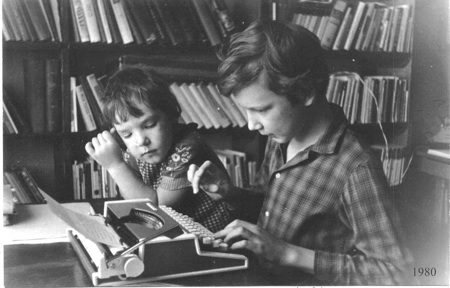
This week’s lecture was about some models of human motor behavior (slides available). Several models were presented in the class, but we focussed on two; Fitts’s law and Guiard’s model of bimanual skill. The goal of the lecture was that students would be able to tell the difference between descriptive and predictive models and be aware of some of the design implications of the models presented in the class.
Predictive models are models that allow one to predict a person’s performance at a task. They have the advantage that you don’t need to go through the trouble of building a test and recording performance empirically. Descriptive models help to explain the way people perform at a task. Descriptive models are useful for giving a framework and vocabulary for understanding and talking about a problem.
Fitts’s Law
There is a relationship between the distance to a target (e.g. a button), it’s size and the time it takes to click on (acquire) it. Larger closer buttons take less time to acquire than further, distant ones. Fitts’s law is a predictive model which expresses this relationship in a mathematical equation:
T = a + b log2(D/W + 1)
Where T is time, a and b are experimentally determined constants, D is distance to the target and W is the width of the target. This relationship is actually a very good predictor of the time it takes to click on a target. For this week’s class, I developed a web-page where you can test this relationship out for yourself. The results from the first week seem to be in line with what one would expect from the law.
Fitts’s law has some surprising implications for interface design. It explains why the corners and edges of the screen are very quick to acquire, even though they may be further away from other targets. The reason for this is that when using a mouse a user can keep scrolling past the edge of the screen and the mouse will stay at the edge fo the screen. This means that there is effectively a very big button outside each of the four corners and four edges of the screen.
See this quiz from Bruce Tognazzini for some tricky questions related to Fitts’s law.
Guiard’s model of bimanual skill
Guiard’s model of bimanual skill is a descriptive model of the way people divide certain kinds of tasks between their preferred and non-preferred hands. The model describes how people tend to use their non-preferred hands for the larger framing movements of a task and their preferred hands for the finer detailed movements. For example, when writing the non-preferred hand might steady and position the sheet of paper as the preferred hand writes.
See my summary of Guiard’s paper for a fuller description.
Practical Task:
-
In groups of three:
-
Find a situation that you could apply one of the models that we covered in this week’s class.
-
Prepare a short presentation for next week’s class (max 5 mins).
Readings
The readings for next week’s class are:
-
Preece, J., Sharp, H. & Rogers, Y., 2002. “Interaction design : beyond human-computer interaction”, New York: J. Wiley & Sons. Chapter 3
-
Payne, S., 2003 “User’s Mental Models: The Very Ideas” in Carroll, J (ed) “HCI Models, Theories, and Frameworks” London, Morgan Kaufman.** **